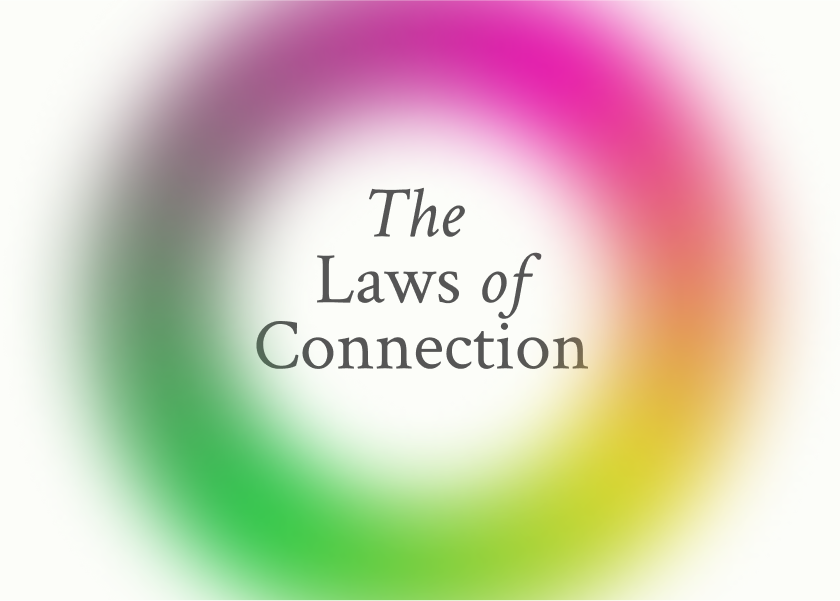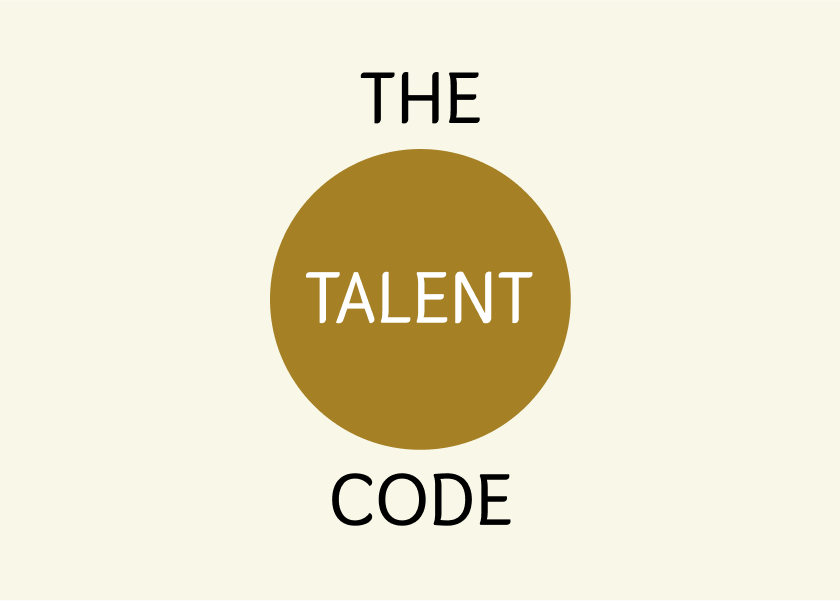The Laws of Connection by David Robson - Summary
Unlock the scientific secrets to building stronger, more meaningful relationships! Based on 300+ studies, discover how to overcome hidden barriers & create a more fulfilling social life for better health & happiness.

The following is a summary and review of the book The Laws of Connection by David Robson.
Unlock the Secrets to Deeper Connections
Are you sometimes left wondering why some relationships flourish while others falter? Do you find yourself struggling to build meaningful bonds in your personal or professional life? In a world that often feels increasingly disconnected, the ability to forge and maintain strong social ties is more vital than ever for our well-being and happiness. David Robson's The Laws of Connection: The Scientific Secrets of Building a Strong Social Network delves into the scientific principles that underpin successful relationships, offering a practical guide to overcoming common social barriers and enriching our lives through deeper connections. Drawing upon over 300 academic papers, Robson, an acclaimed science writer and author of The Intelligence Trap and The Expectation Effect, presents thirteen overarching "laws of connection" that promise to help readers cultivate more satisfying and supportive social networks. This insightful book has resonated with many seeking to understand the complexities of human interaction and implement evidence-based strategies for building better bonds.
Table of Contents
- About the Author
- Who Should Read This Book?
- Key Insights and Themes
- Detailed Summary
- Review
- Actionable Takeaways
- FAQs
- Conclusion
About the Author
David Robson is a distinguished science writer known for his ability to translate complex scientific research into accessible and engaging narratives. With a background in journalism, Robson has contributed to renowned publications such as the Guardian, New Scientist, and the BBC. His previous works, including The Intelligence Trap and The Expectation Effect, have explored the intricacies of human cognition and how our beliefs shape our reality. Robson's personal journey of overcoming shyness adds a layer of authenticity and relatability to his exploration of social connection. His meticulous approach to research, evidenced by the extensive list of academic sources in "The Laws of Connection", establishes him as a credible and insightful guide in the realm of social psychology.
Who Should Read This Book?
The Laws of Connection is a valuable resource for anyone looking to enhance their social skills and build more fulfilling relationships. This includes:
- Individuals who identify as shy or socially anxious: Robson's own experiences and the book's emphasis on overcoming miscalibrated intuitions offer practical encouragement and strategies.
- People navigating new social environments: Whether you're a student starting university, an expat moving to a new country, or someone starting a new job, the book provides guidance on forming connections in unfamiliar settings.
- Those seeking to deepen existing relationships: The principles discussed extend beyond initial connections, offering insights into maintaining and strengthening bonds with friends, family, and colleagues.
- Leaders and managers: Understanding the dynamics of social connection can improve team cohesion, communication, and overall workplace culture.
- Anyone interested in the science of human interaction: The book presents a wealth of research findings in an accessible manner, offering a deeper understanding of the psychological forces that shape our social lives.
Essentially, if you've ever wondered how to bridge the gap between yourself and others, navigate social challenges with greater confidence, or simply cultivate a more rewarding social life, The Laws of Connection offers evidence-based guidance to help you achieve those goals.
Key Insights and Themes
Here are some of the key takeaways and main ideas explored in The Laws of Connection:
- Social connection is fundamental for well-being: Research shows that strong social ties are crucial for both physical and mental health, rivalling the importance of diet and exercise.
- Our social intuitions can mislead us: We often underestimate how much others like us (the "liking gap") and misjudge the impact of our social behaviours.
- Building connections is a skill that can be learned: The book debunks the "personality myth" and emphasises that practical steps can be taken to improve social confidence and form deeper relationships.
- Overcoming egocentric thinking is vital for mutual understanding: We must actively consider others' perspectives to avoid miscommunication and build shared reality.
- The art of conversation involves active listening and asking thoughtful questions: Engaging with others' experiences and showing genuine interest are key to building rapport.
- Expressing sincere appreciation and gratitude strengthens bonds: Compliments and acknowledgements, when specific, make others feel understood and valued.
- Honesty and vulnerability foster deeper connections: While navigating truth and secrets is complex, authentic self-disclosure can enhance intimacy.
- Managing envy and celebrating others' successes (confelicity) is crucial for maintaining healthy relationships: Understanding the psychology of bragging and humility helps navigate social comparisons.
- Asking for help, when done thoughtfully, can increase liking and strengthen bonds: Overcoming the fear of appearing needy can lead to positive social interactions (the Benjamin Franklin Effect).
- Healing bad feelings involves validation and guiding towards constructive perspectives: Offering effective emotional support requires empathy and encouraging reflection.
- Constructive disagreement requires civility, active listening, and understanding different moral viewpoints: Navigating conflicts respectfully can strengthen, rather than break, connections.
- Forgiveness is essential for personal well-being and maintaining long-term relationships: Letting go of grudges is vital for both our mental and physical health.
- Technology can both strengthen and damage relationships: Applying the principles of authentic connection is key to navigating the digital social landscape.
Detailed Summary
The book is structured into two main parts: Building Connections and Maintaining Connections.
Part 1 – Building Connections
1. The Social Cure
This chapter establishes the fundamental importance of social connection for our physical and mental health. It opens with the dramatic survival story of Yossi Ghinsberg in the Amazon, highlighting the primal need for human contact. The chapter also discusses the landmark Alameda County study, which demonstrated that social connection was a significant predictor of longevity, even more so than many lifestyle factors. It underscores that our evolutionary history has programmed us to seek social bonds, and the absence of these bonds can have detrimental effects.
2. How We Connect
This chapter explores the concept of shared reality, the feeling of experiencing commonality with others' inner states about the world. It discusses how our brains can synchronise during social interactions, leading to feelings of closeness and understanding. The chapter touches upon the nuances of interpersonal chemistry and the initial stages of forming bonds.
3. The Personality Myth
This chapter challenges the notion that our personality traits rigidly define our ability to connect. Drawing inspiration from literary examples like Mr. Darcy, Robson argues that social skills can be learned and improved. He introduces the concept of the "liking gap", where we systematically underestimate how much others enjoy interacting with us. The chapter emphasises the importance of self-compassion and adopting a growth mindset to overcome social anxieties and build confidence.
4. Overcoming Egocentric Thinking
This chapter focuses on the cognitive biases that can hinder effective communication and connection. It explores the "curse of knowledge", our difficulty in remembering what others do not know, illustrated by the example of J. Edgar Hoover and the "director task" experiment. The chapter highlights the importance of perspective-taking and actively considering others' viewpoints to build mutual understanding.
5. The Art of Conversation
This chapter delves into the practical skills of effective communication. It highlights Hazlitt's Law, emphasising the importance of listening as much as being heard. The chapter stresses the effectiveness of asking more questions, particularly follow-up questions, to show interest and deepen engagement. It introduces the "fast friends procedure" as a structured way to rapidly build closeness through increasingly personal questions. The chapter also discusses the "novelty penalty", our tendency to prefer hearing about familiar experiences, and the importance of providing sufficient context when discussing new topics.
6. Expressing Appreciation
This chapter focuses on the power of praise and gratitude in fostering social connection. It counters historical warnings against flattery with scientific evidence demonstrating the motivational and persuasive benefits of sincere compliments. The chapter reveals that people often underestimate the positive impact of giving compliments and encourages readers to be more generous with their praise, while also being highly specific in their words of appreciation. Similarly, it highlights the benefits of expressing gratitude by acknowledging the personal qualities behind generous acts.
Part 2 – Maintaining Connections
7. Truth, Lies and Secrets
This chapter explores the complexities of honesty and disclosure in relationships. It discusses the psychological burden of keeping secrets and how revealing them can sometimes enhance connection (the "beautiful mess effect"). The chapter also examines the risks associated with evasion, paltering, and even "white lies", suggesting that honesty, while sometimes difficult, often leads to stronger trust.
8. Avoiding Envy and Enjoying Confelicity
This chapter addresses the challenges of social comparison, envy, and celebrating others' successes. It examines the pitfalls of "humblebragging" and the negative perceptions of unfounded arrogance. The chapter offers guidance on how to share our own successes authentically while mitigating envy by acknowledging challenges and mistakes. It emphasises the importance of "confelicity", genuinely enjoying others' good fortune.
9. Asking for Help
This chapter explores the often-underestimated power of asking for assistance. It introduces the "underestimation-of-compliance effect", the tendency to underestimate others' willingness to help us. The chapter revisits the Benjamin Franklin Effect, explaining why asking for a favour can actually increase liking. It also discusses the health benefits of generosity and the Japanese concept of "amae", the desire for benevolent dependency in close relationships. The chapter offers advice on how to ask for help respectfully and effectively.
10. Healing Bad Feelings
This chapter focuses on providing effective emotional support to others. Drawing upon historical examples like Henry James's correspondence, it emphasises the importance of validation and active listening. The chapter discusses the limitations of simply "venting" and highlights the benefits of "autobiographical reasoning" and encouraging reflection to help others reframe their experiences. It also addresses the "paradox of compassion" and the importance of respecting others' need for solitude.
11. Constructive Disagreement
This chapter provides principles for navigating disagreements in a healthy and productive manner. It introduces the "Montagu Principle", stressing that civility costs nothing and buys everything in arguments. The chapter highlights the importance of showing interest in the other side's viewpoint, sharing personal experiences (Tucholsky's Principle), and translating opinions into their moral language. It emphasises that receptivity and a desire for mutual understanding can lower defensiveness and facilitate more constructive dialogue.
12: Finding Forgiveness
This chapter explores the psychological benefits of forgiveness for both the giver and the receiver. It discusses the emotional toll of holding onto grudges and presents strategies for letting go of resentment. The chapter outlines the REACH forgiveness program and emphasises the importance of effective apologies, including being specific about the offence, accepting responsibility, and expressing regret.
Conclusion: The Thirteenth Law of Connection
The concluding chapter reflects on the twelve laws of connection discussed throughout the book. It emphasises that we have a greater capacity for social connection than we often realise and encourages readers to take proactive steps to nurture their relationships. It also addresses the future of friendship in the digital age, arguing that technology can be a tool for strengthening connections when used intentionally and with an understanding of the core principles of human interaction. The "thirteenth law" implicitly encourages readers to be mindful and proactive in applying these principles to cultivate a more connected and fulfilling life.
Review
The Laws of Connection is a well-researched and insightful book that offers a compelling look at the science behind successful social relationships. Robson skillfully synthesises a vast body of academic literature into practical and accessible advice. The book's strength lies in its ability to debunk common social anxieties and misconceptions with evidence-based findings, offering a sense of optimism and empowerment to readers. Robson's inclusion of his own experiences with shyness adds a relatable and human touch to the scientific exploration.
However, the sheer volume of research and the comprehensive nature of the thirteen "laws" could feel slightly overwhelming to some readers. While the detailed explanations are a strength, breaking down each nuanced aspect of social interaction might require careful and focused engagement. Additionally, while the book touches on various relationship types, some readers might desire more in-depth exploration of specific contexts, such as romantic partnerships or family dynamics, despite the author's disclaimer. Overall, The Laws of Connection is a valuable and thought-provoking resource for anyone seeking to understand and improve their social connections, offering a robust scientific foundation for building a more fulfilling social life.
Actionable Takeaways
Here’s how to apply these lessons in real life:
- Challenge your "liking gap": Initiate conversations with the assumption that others will likely enjoy interacting with you.
- Ask more follow-up questions: Show genuine interest in what others are saying by delving deeper into their experiences and perspectives.
- Practise the "fast friends procedure" (with tact): Explore deeper, more personal questions to accelerate intimacy in appropriate settings.
- Be specific with praise and gratitude: Instead of generic compliments, highlight unique qualities and acknowledge the thought behind kind actions.
- Consider the psychological burden of your secrets: Evaluate whether sharing certain secrets with trusted individuals could alleviate stress and foster closer bonds.
- When discussing successes, be mindful of envy: Share the challenges and setbacks you encountered along the way to create a more relatable narrative.
- Don't hesitate to ask for help (respectfully): Recognise the "underestimation-of-compliance effect" and frame your requests thoughtfully, allowing others to decline without feeling awkward.
- Validate others' feelings and encourage reflection during times of distress: Offer empathetic listening and guide them towards reframing their experiences.
- Engage in disagreements with civility and curiosity: Seek to understand the other person's viewpoint and express your own perspectives respectfully.
- Practise forgiveness: Work towards letting go of grudges for your own well-being and the sake of your relationships.
- Be mindful of your digital interactions: Apply the principles of authentic connection in your online communication to nurture genuine relationships.
FAQs
- What is the main focus of "The Laws of Connection"? "The Laws of Connection" explores the scientific principles that underpin the formation and maintenance of strong social relationships. It draws on extensive research in social psychology to provide practical guidance on building a more satisfying social network.
- Is "The Laws of Connection" worth reading? Yes, for individuals seeking to understand the science of human connection and implement evidence-based strategies for improving their social skills and building more meaningful relationships, this book is highly recommended. It offers valuable insights for overcoming social anxieties and navigating the complexities of human interaction.
- Does the book offer advice for specific types of relationships (e.g., romantic, family)? While the book's principles are rooted in our human nature and apply broadly to every person we meet, it is not specifically a dating or parenting manual. However, readers may find that the tips can positively impact their love life and family relationships.
Conclusion
The Laws of Connection offers a compelling and evidence-based roadmap for navigating the intricate world of human relationships. By illuminating the scientific secrets behind building and maintaining strong social networks, David Robson empowers readers to overcome their miscalibrated intuitions and cultivate more fulfilling connections. The book serves as a powerful reminder of the crucial role social ties play in our overall well-being and happiness. Whether you are looking to overcome shyness, deepen existing friendships, or navigate new social landscapes, the practical insights and research-backed advice in this book provide a valuable guide. Embrace these laws of connection, take actionable steps, and unlock the potential for a richer, more connected life.
As an Amazon Associate, ShelfHelp may earn money from qualifying purchases. Needless to say, ShelfHelp only includes affiliate links to books we recommend and think are worth your time reading.




